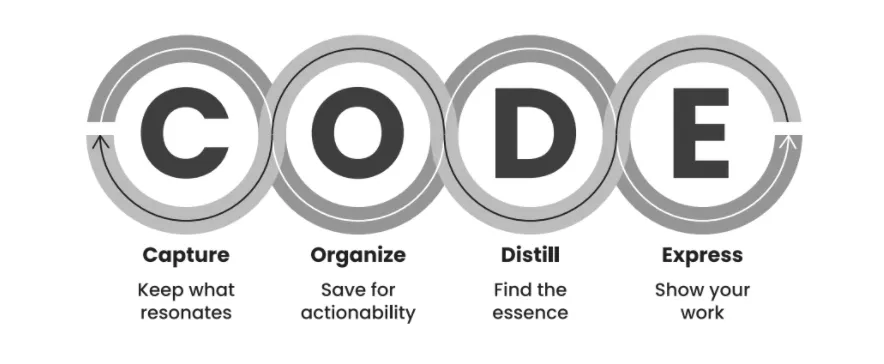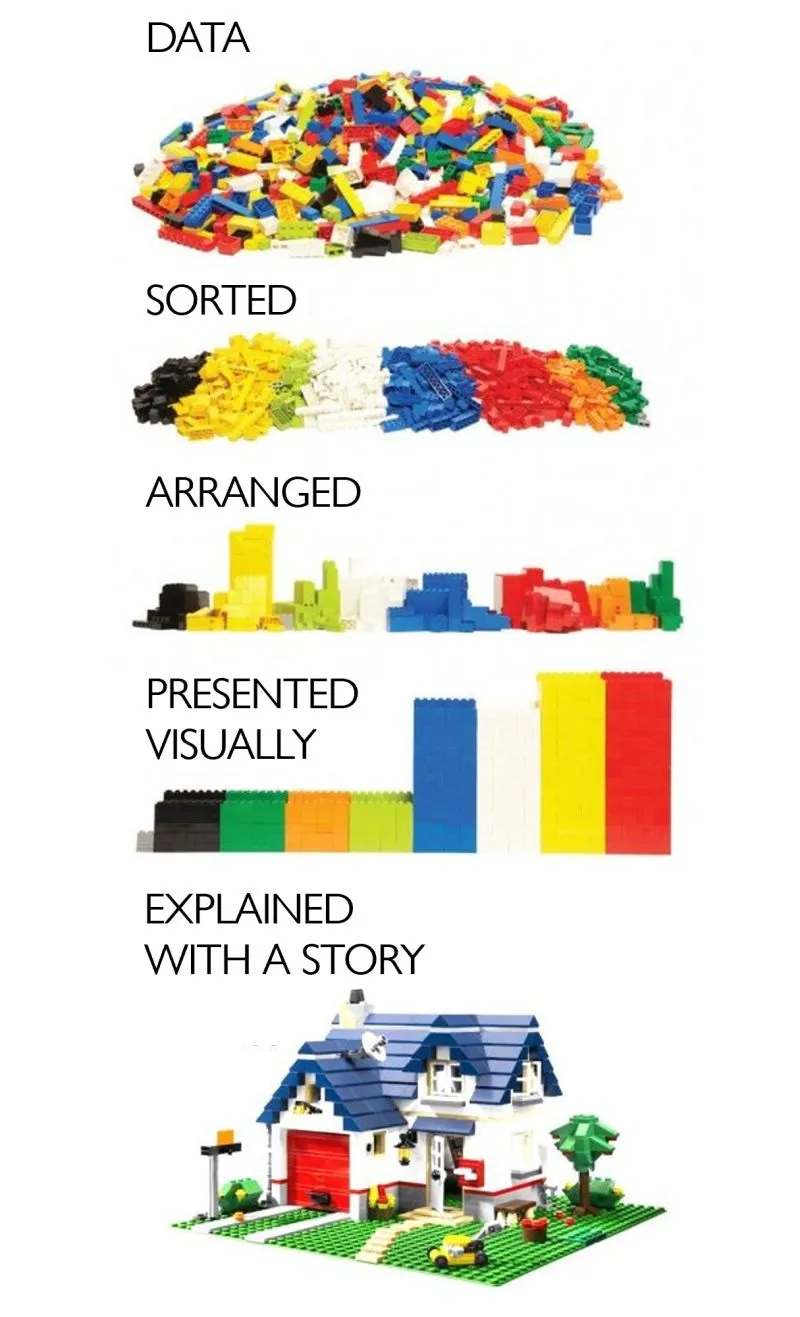In this writing, we’re going to discuss how to use a framework/model called CODE as a way to manage and optimize your information diet. Growth and staying ahead is a big part of personal development, and in my opinion the requirement for growth is exposure.
So what is CODE?
CODE stands for Capture, Organize, Distill and Express. The fundamental of CODE are basically evolves around how data are used, information can be sources everywhere which can be scattered and difficult to make use.

 We’re going to discuss how we can capture, organize, distill and express information effectively. In the past, distilling information was challenging due to a lack of proper organization methods. However, with the abundance of information capture methods available today, the process has become more manageable.
We’re going to discuss how we can capture, organize, distill and express information effectively. In the past, distilling information was challenging due to a lack of proper organization methods. However, with the abundance of information capture methods available today, the process has become more manageable.
In these days, the sheer volume of information can be overwhelming. Valuable insights can be sourced from platforms like Twitter, YouTube, LinkedIn and Newsletter. To effectively capture, organize, and distill this information, we need to apply our past experiences and knowledge. Distillation, though, is a complex task.
Information comes in various forms and often conveys similar objectives (essence). For an example, a marketing strategies there are so many different terms out there to describe a User Journey. Some might call it TOFU, MOFU, and BOFU, some others might call it Demand Generation and Demand Capture. Even, for copywriting specifically there’s also “Five Level of Awareness” by Eugene Schwartz that describe the journey of a prospect building awareness of the product. The challenge lies in the different ways these concepts are presented by various sources. Extracting valuable insights from these diverse perspectives can be both useful and tough.
(a picture of perspectives looking at the same thing but seeing it differently)
Capturing
Capturing information involves various sources like YouTube, Twitter, email, and blogs. These are valuable knowledge sources, divided into two categories: Leading Edge information (e.g., YouTube, Twitter) and Permanent Value (e.g., books, courses). These sources can be easily captured using tools like bookmarks or saved links.
###### _“On mark 21-minutes, Marc describe how he source most of his information: Social Media for Leading Edge information, and books for Permanent Value. He applied Barbell Strategy for managing his information diet - He also explained why he followed up to 20,000 people on Twitter”_Permanent knowledge, fundamental principles, and long-form learning play a crucial role in shaping foundational knowledge. However, effectively absorbing this information can be tough. To manage this, using a model called PARA is useful. It involves categorizing resources into projects, resources, and archives, making it easier to access relevant knowledge.
Organize
Managing knowledge involves handling both incoming and outgoing information. Knowledge gained from meetings and feedback should be stored according to their respective contexts. It’s crucial to avoid mixing personal, professional, and other types of information in one place, which can be achieved by employing a structured system like the “second brain.”
Processing information involves reading, understanding, and capturing key points. Curating information through passive and active methods aids in filtering out irrelevant content. Leveraging judgment from experts and applying principles helps in sorting quality knowledge from the vast amount available.
Distilling
Distilling information is a step-by-step process driven by curiosity. Researching, exploring, understanding, and planning are the four phases of this process. By researching and exploring topics, you identify gaps and areas to focus on. Understanding the context and building models refine your knowledge. Planning involves aligning acquired insights with your goals.
Express
When expressing distilled information, the bottom-up approach involves exploring topics, building projects, and innovating within the knowledge domain. The top-down approach aligns with your purpose and vision, helping you prioritize relevant projects.
Organizing knowledge efficiently is achieved by integrating all information into a central hub like Notion. Leveraging AI to categorize, cluster keywords, and generate summaries aids in managing large volumes of information. Curating information through contact, keywords, and summaries streamlines the process.
Ultimately, the goal is to use these tools to gain a better understanding of oneself. While tools like PARA methodology and second brain systems are effective, self-awareness and aligning with your life’s purpose remain key to achieving a meaningful and impactful life. By understanding these principles, you can navigate the abundance of information and apply it to enhance your life’s journey.